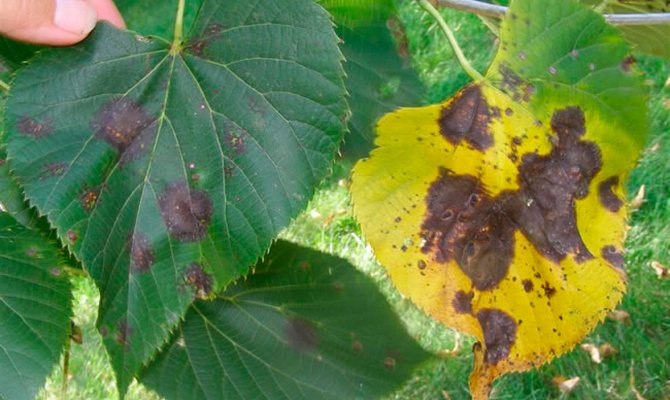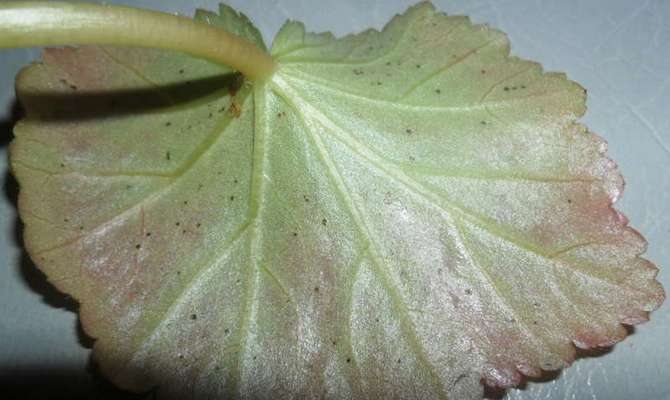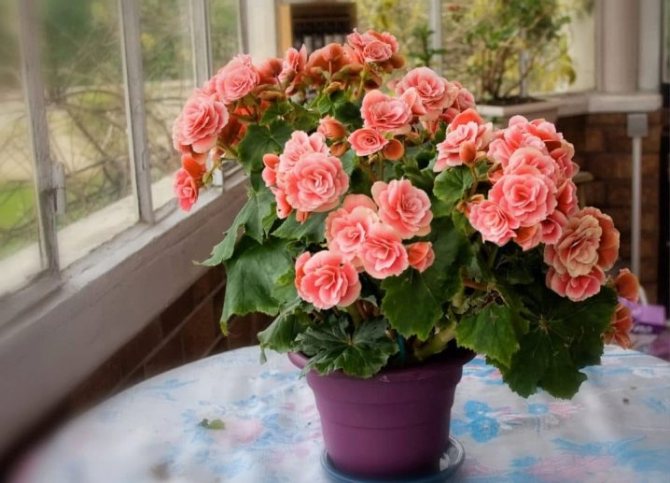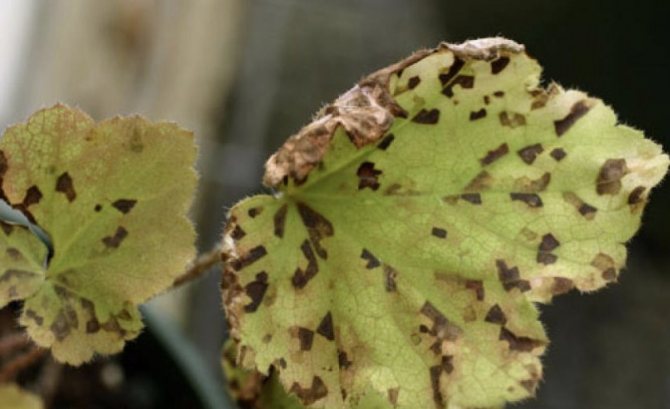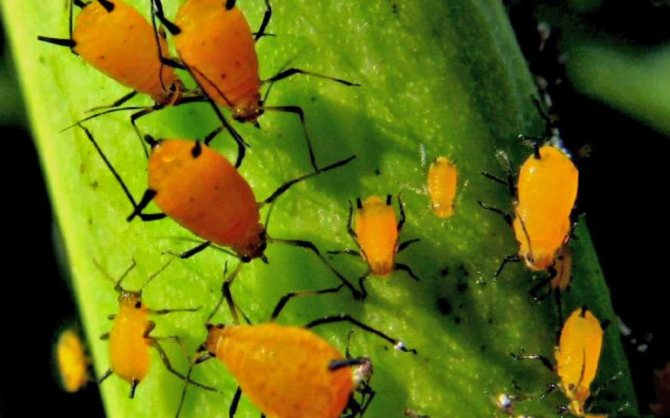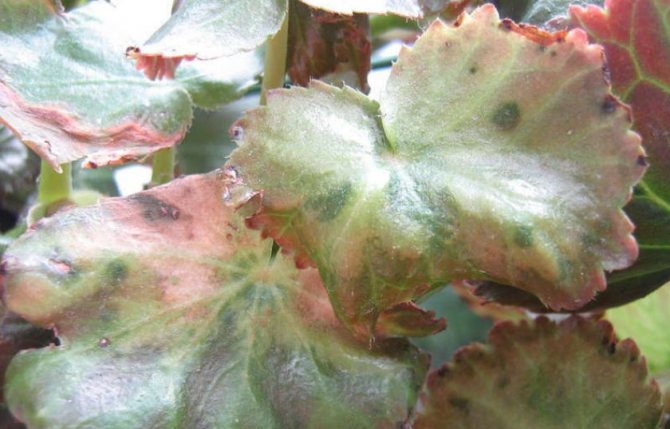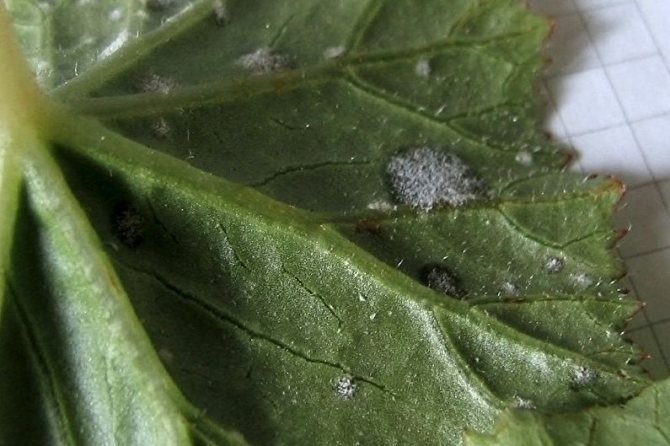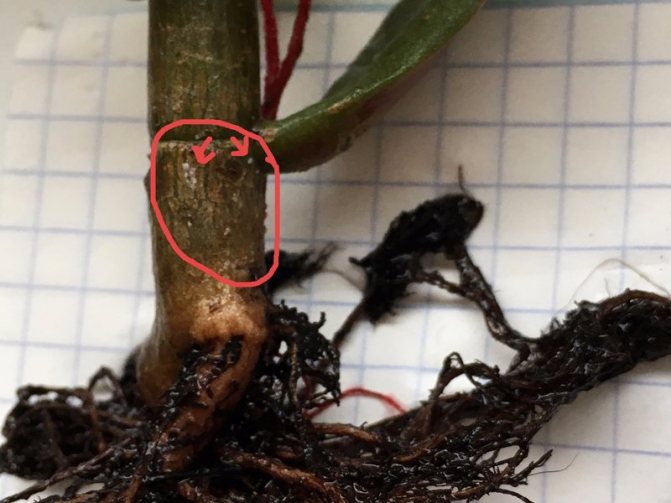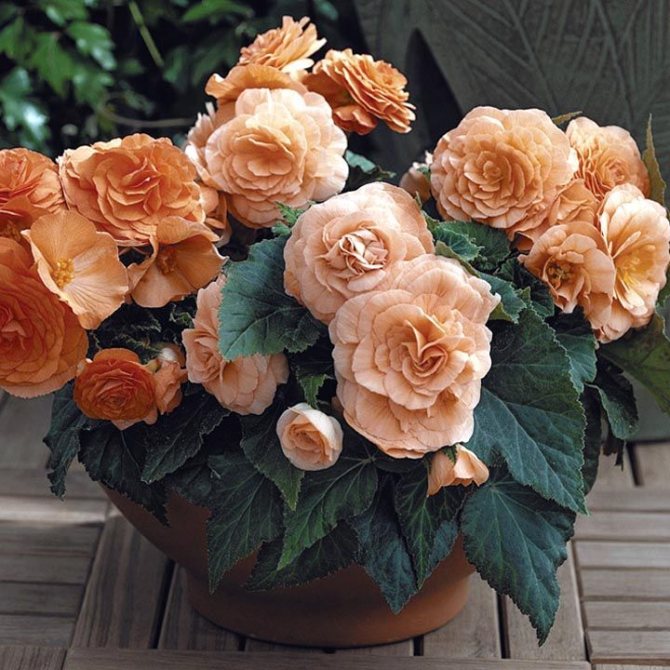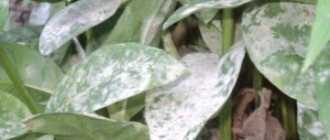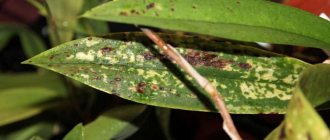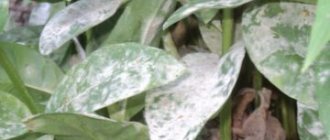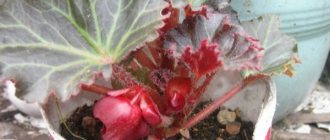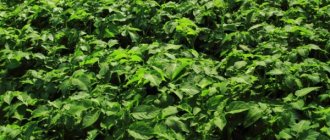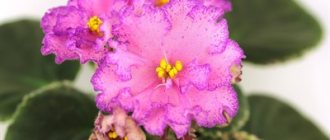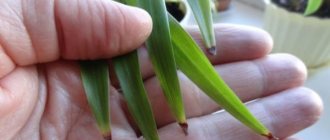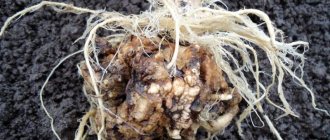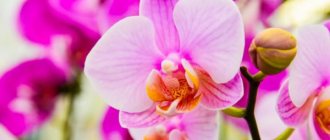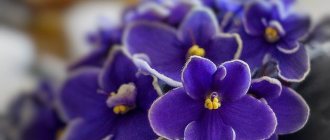The beautiful begonia has a not too capricious character. Subject to the recommendations for caring for the plant, it will delight the eye with a bright green mass and repeated flowering. However, due to various circumstances, it sometimes happens that the general condition of the flower suddenly begins to deteriorate.
The appearance of the leaves of the plant will help determine the nature of the disease of begonia and begin its adequate treatment. The most common diseases of begonias include:
- powdery mildew;
- gray rot;
- vascular bacteriosis;
- shield.
Powdery mildew
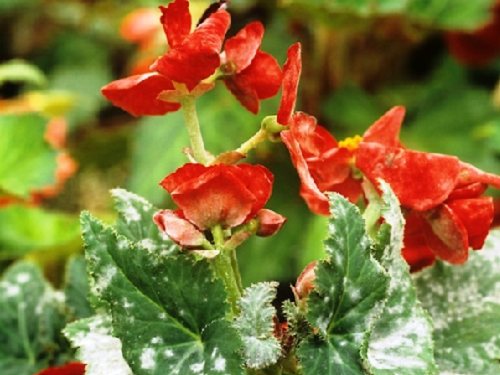
A symptom of the disease is round brown spots on the leaves with a white coating. The affected area quickly expands to the entire leaflet. The reason for the appearance of powdery mildew is too high a temperature and a low level of humidity in the room where the pot stands.
The affected begonia should be separated from the rest of the plants.
If the spots have just appeared, the leaves are sprayed with Fitosporin-M or Alirin-B. In the case when the onset of the disease is missed and all leaves are affected, it is necessary to treat with Topaz or Strobin.
Pests and the fight against them
What pests do begonia have to be saved from? Spider mites and aphids are dangerous to the plant. To defeat them, they treat it with a solution made from onions. Take one liter of water and pour 15 grams of finely chopped onion into it. Within seven days, the solution is infused, and after straining, the affected plant is treated with it. The treatment is stopped as soon as the pests disappear.
Snails
On a note. Garden snails are not afraid of domestic begonias, but they can cause irreparable harm to garden residents.
They appear where the soil is alkaline and there is calcium, which they need to form a shell. In most cases, growers cannot detect the pest, as it is active in wet weather and at night. After himself, he leaves a slimy secret on the leaves.
Experienced flower growers do not struggle with snails, as they are orderlies in the garden. They recycle damaged or dead plant residues. If you do not like that they have chosen begonias, use an organic approach in the fight against them. If it withers, feed it with fertilizers and protect parts of the plant from the activity of snails. In extreme cases, pesticides are used, dealing with them once and for all.
Aphid
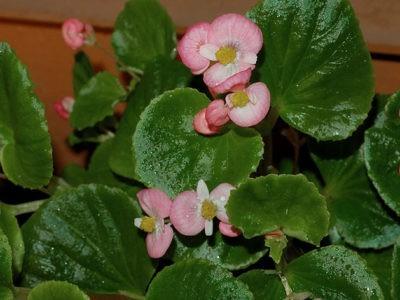

A frequent and dangerous enemy of begonias is aphids. Many growers underestimate her, because they think that she moves a little, and, therefore, the harm from her is small. This is true, but in part. It reproduces rapidly by feeding on begonia sap and covering its stems and leaves with sugary secretions. If you miss the time, flocks of ants will soon be spotted on it. Even if this does not happen, all the leaves will be contaminated with aphids and covered with yellow spots. They will wither and fall.
Aphids are found on the back of the leaves, on young shoots, the top and buds of a charming plant. A pest with a size of several millimeters starts in the spring due to high humidity and low temperatures. It is difficult to deal with aphids, it is better to prevent them from appearing. The main thing is to follow all the recommendations for care, i.e. water on time, do not put the pot at the mercy of direct sunlight and make sure that the air temperature does not rise above + 20⁰С.
For prevention, sprinkle begonia with a solution of nettle or put a box of parsley near it. When aphids are damaged, the most effective remedy is to treat parts of the plant with soapy water.
Spider mite
This small pest with a body length of 0.1-0.3 mm. It is difficult to notice on the leaves a sucking arthropod with a yellowish or green body. It takes a liking to the underside of the leaves when the air in the room is dry and warm. Over time, they will become marble, and through a magnifying glass they will make out a thin cobweb. They will soon turn yellow and fall off.
To cope with the pest, the affected begonia is treated with Decis.
Gray rot
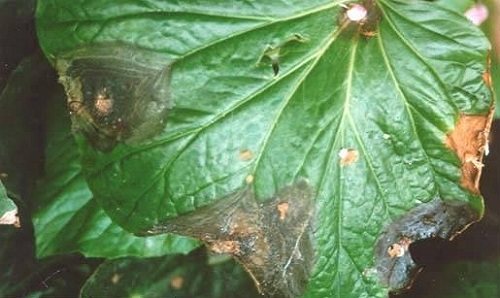

Increased humidity and frequent watering lead to gray rot disease. At the initial stage, the leaves are covered with gray spots, sticky to the touch. Gradually, the stain expands and leads to rotting of the leaf, as well as the stem itself.
To save the plant, the pot is moved to another location or the humidity in the room is adjusted. Remove diseased leaves, and spray the remaining leaves with a 0.1% solution of Euparen or Fundazole.
What to do?
If the once gorgeous and beautiful begonia suddenly dried up, do not get upset and panic. Perhaps the plant can be saved. This is possible if the aerial part has dried up, and the root system of the flower is alive. To reanimate begonia, you should follow a series of simple steps.
- Carefully remove the root system from the soil, being careful not to damage its individual areas.
- Examine the roots. If there are no parasites or rot on them, the plant can be helped. In this case, the damaged areas of the roots are removed, and the remaining ones sit in a pot with soil.
- The soil should be fed, and then cover the pot with a plastic bag.
- Begonia is placed in a bright and warm place. If done correctly, new stems and young foliage will soon emerge from the soil.
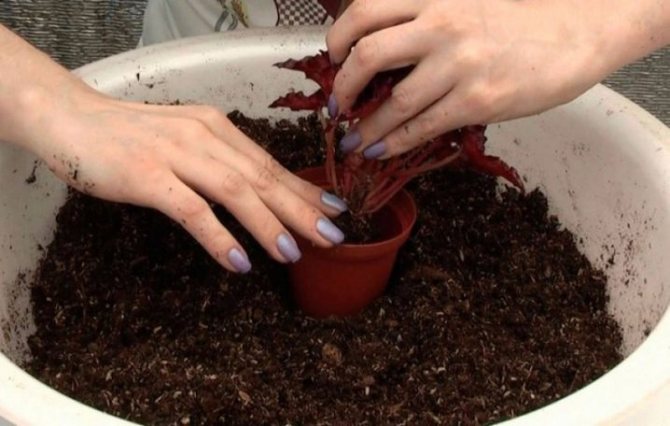

Drying of leaves is not always the result of improper care, attack by pests or infections. Don't worry if the lower foliage gradually dies off. This is a natural process found in most plants. If serious problems are found, begonias should be provided with quality care and treatment, and then the plant will again delight with dense foliage and abundant flowering.
For information on why begonia leaves dry, see the next video.
Diseases that do not respond to treatment
With the timely detection of damage, begonia can be reanimated with the help of special drugs. However, there are diseases, the presence of which makes begonias a fatal diagnosis:
- Ring spot. It is transmitted by pests and is characterized by the appearance of yellow spots and dead areas on the leaves.
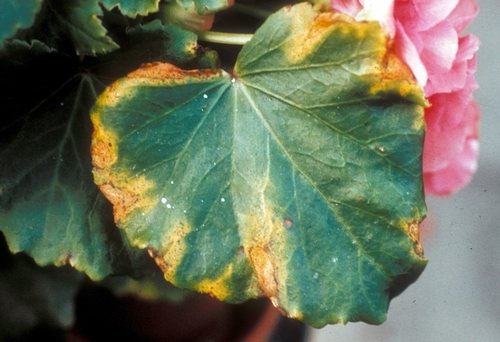

- Bacterial spotting. On the back of the leaf, watery small spots appear, which eventually darken and completely affect the entire flower, including the inflorescences.
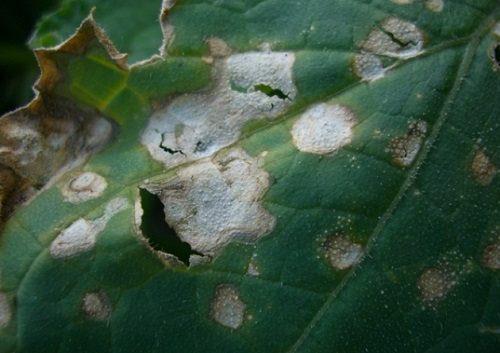

- Leaf nematode. The edge of the leaf first fades, retaining its green color, and then gradually dries out. A completely dry leaf is covered with brown spots. The disease is transmitted to the flower through the soil as a result of low temperatures and high humidity.
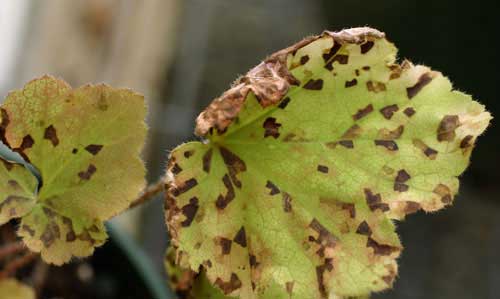

In these cases, begonia must be destroyed immediately so that the disease does not spread to other plants.
Why begonia leaves dry: 2 groups of reasons
Whatever the specific reason, it is obvious that the violation can be associated either with improper care conditions, or with diseases that have affected the beloved begonia. Here are 2 groups of reasons.
Violations of the rules of care
As a rule, the question of why the leaves of room begonia dry can be answered unequivocally: the basic rules of care have been violated. Here are some things to watch out for:
- First of all, you need to remember did the environmental conditions change too abruptly... Perhaps the flower was moved to another window or it survived the move.Perhaps the begonia remained on the insulated balcony in winter, but due to frequent ventilation and drafts, the health of the plant was in jeopardy.
- Begonia leaves dry at the edges in conditions of too dry air... You need to check if the pot is too close to the heating radiator. And in the summer, wilting is possible due to too abundant sunlight. It is better to move the pot away and place it behind the tulle. It is also worth starting to humidify the air - you can just put a plate of water next to the flowers. Or put a damp towel (moistened moss can be used). But you should not spray the foliage - sunburn may appear.
- The condition of the soil should also be checked.... First of all, it should not be too heavy - i.e. it is worth carefully loosen the soil. And of course, it is unacceptable if it dries up. Water regularly so that the surface remains slightly damp. However, excess water is also not allowed. If begonia grows on the street, then its leaves dry, rather, precisely because of a lack of moisture. Then you need to additionally spray the air around it.
- If there is enough moisture, there may be another obvious reason why begonia leaves (as well as flowers) dry. Simply the plant lacks trace elements, i.e. fertilizers. In the case of begonia, you can choose the usual complex fertilizer, which contains mainly substances with potassium and phosphorus (nitrogen should be as little as possible). They are fed in the spring and summer period 1-2 times a month. Moreover, it is better to slightly reduce the concentration indicated in the instructions (for example, by 1.5 times). The fact is that the plant is not very fond of salting the soil. And if even in this case, the begonia leaves dry, you can tell what to do: just add organic fertilizing (1-2 times a year).
Pest diseases
If the flowers of the plant wither, the leaves dry at the edges, but at the same time the begonia receives a sufficient amount of moisture and trace elements, the reasons are most likely associated with diseases. The following types of violations are possible:
- Powdery mildew Is a microscopic fungus that leads to the formation of numerous white specks on the surface of the leaves. In addition, a whitish coating may appear.
When improper care is to blame
Unpretentious begonia can not be called. The plant needs good care. Otherwise, ailments begin to overcome him.
Leaves curl and dry
In this state, the plant signals a severe deficiency of moisture in the soil and air. To save it, it is urgent to water it and remove it from the bright sun, and in the future to prevent such situations. Begonia is photophilous, but direct sunlight is not an easy test for her.
New leaves grow small
This is how begonia reacts to a decrease in soil nutrition. The plant needs to be fed. Liquid fertilizer for home flowering plants is optimal for quick relief. And in the future, do not neglect top dressing, do them every 2 weeks. Leaf begonias need fertilizers rich in nitrogen, flowering begonias need phosphorus.
Important! The best soil for planting begonias is a mixture of leafy earth (1 hour), humus, peat and sand (0.5 hours each).
The stems and tops are rotted
This is a continuation of root rot, which appears when there is an excess of moisture. To eliminate it, it is necessary to temporarily stop watering, place the begonia in the sun, and further prevent waterlogging.
Important! The flower does not like changes in location, so they do it only in vital cases.
In winter, the leaves fall
Discoloration and winter leaf fall eloquently speaks of too cool temperatures or the presence of drafts, which begonia really does not like. Eliminating these causes will return everything to its place.
How to save from decay?
Roots rot due to excess moisture.The resuscitation of begonia in this case is as follows: the grower must dig up the plant and transplant it into a new pot, having previously treated the roots with a fungicidal preparation. Sometimes this measure does not bring the desired result, and the plant dies anyway. This is due to the rapid spread of rot in its parts. Having lost time, they will not save the darling, but they will grow a new one from a leaf or part of it.
Your beauty may have other problems that we will help you solve. Read on for information on what to do if begonia withers or does not take root well, and the blooming plant does not bloom.

